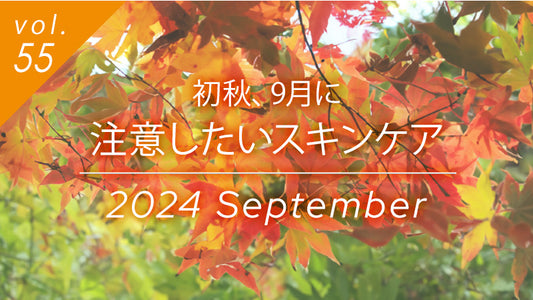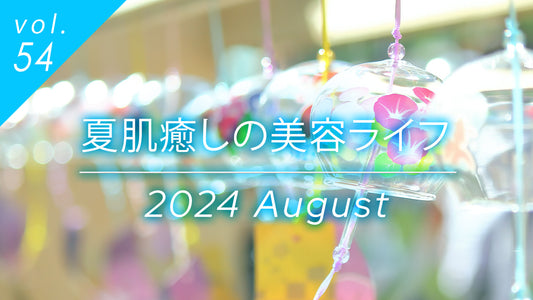
首都圏以西では、3月に桜の満開を迎え、4月には芽吹きや新緑が目に付くようになるのではないでしょうか?日本の季節は半月程度前倒しになっているのは間違いなさそうです。季節感は変化しても、4月特有の人間関係や住生活などの環境変化があるのは毎年変わりませんね。4月より「新年度」がスタートする日本では、入社、人事異動、入学、新学期、引越しなど、公私共に環境や生活リズムが大きく変化します。今回は環境変化を意識したスキンケアや美容ライフへの取り組みについてお伝えします。
4月特有の環境変化を理解する
1.気象環境の変化

昨年2021年の東京の気象データで特徴的なのは、お肌のストレスにつながる寒暖差・湿度は真冬並み。つまり、寒暖差が大きく、引き続き乾燥状態にあることがわかります。注目いただきたいのは全天日射量です。4月は、年間で最大の日射量を記録しています。
本来、北半球で昼間の時間が最も長くなる夏至(2022年は6月21日)こそ、日射量も最大となるはずですが、この時期の日本は梅雨の時期と重なるため、実際の日射量は低下します。4月は、夏至に向かって昼間の時間が長くなり続け、6-7月より晴天の日も多い傾向ですので、日射量が大きくなります。
気温や湿度の面では、冬同様のスキンケア対策が必要で、太陽光に対しては最高レベルの対策が必要な4月であると理解しましょう。
2. 生活リズム、環境の変化

日本特有の状況ですが、4月は1年の中でも生活リズムや環境が大きく変化する人が多い月となります。このような生活環境の変化は、美容と健康にとっても大きなストレスとなります。新入社員や新入学の学生などを対象に語られる「5月病」も、これら生活のリズムや環境変化というストレスが一因になっていると思われます。緊張感の中で4月は乗り切れたものの、ゴールデンウィークの休日を経て、倦怠感や体調不良に襲われてしまう。生活環境の変化というストレスが心理的・身体的な変調を引き起こすものです。お肌も心理的・身体的健康と密接に関わっていますので、「5月病」は、肌荒れ、吹き出物、極度の乾燥や敏感なお肌の状態へと傾かせたり、不調を引き起こしかねません。
環境変化ストレスに負けない美容ライフ
<気象・気候変化への対応>
4月の気候・気象状況のキーワードは寒暖差、乾燥、そして日射量です。また、花粉・黄砂などの飛散物質による外的なストレスも加わります。冬同様に保湿ケアを意識して継続することでお肌の角質代謝を健やかに保ち、バリア機能の維持に努めましょう。さらに、夏本番と変わらぬ日射量となりますので、太陽光ケアとしての日焼け止めを正しく、たっぷり使いましょう。
<生活環境変化への対応>
生活のリズムや環境の変化によるストレスからの変調を回避するために意識したい取り組みについてお伝えします。
✔ 十分な睡眠、休息をとる
✔ 適度な運動(散歩、ジョギング、ストレッチなど)
✔ 趣味などに没頭する時間を設ける
✔ 抱え込まず友人や家族に相談する
✔ 不満、不安の自己感情を肯定的に受け止める
✔ 規則的な生活リズムの維持に努める
太陽光ストレス
近年の研究で、紫外線(UVB、UVAの2種)に加え、ブルーライト、近赤外線の肌への影響も報告されています。スキンケアで知っておきたい4種の太陽光ストレスについてお伝えします。

・紫外線(UVB、UVA)の2種
紫外線B波(UVB)…地表に到達するのは約5%程度ですが、エネルギーが強く、サンバーン(表皮を損傷させ火傷状に)を引き起こし、シミ・そばかすの原因となります。
紫外線A波(UVA)…地表に到達する紫外線の約9割を占め、雲や窓も透過し、季節を問わず降り注ぐため年間を通じた対策が必要な紫外線です。 真皮まで届き、シワの原因となることが報告されています。

・ブルーライト
可視光線の中で最も波長が短く、紫外線(UVA)に近い青白色のエネルギーの強い光です。パソコンやスマートフォンなどのディスプレイやLED照明にはブルーライトが含まれており、日常生活でのブルーライトの暴露量が増えています。眼や身体への影響からブルーライトカット効果のある眼鏡の使用などが推奨されています。
一方、太陽光の1種として降り注いでいるブルーライトの量はディスプレイや照明よりさらに多く、皮膚にとってもUVA同様の対策が望まれます。
・近赤外線
波長は長く、エネルギーとしては弱い光なのですが、真皮の奥深くまで到達し、UVA同様に皮膚へ影響することが特定非営利活動団体「光老化啓発プロジェクト委員会」より提唱されており、サンスクリーンの目的の一つとして近赤外線対策を加えることが望まれます。
環境変化を意識したスキンケアや美容ライフへの取り組みについてお届けしました。
次回は、“新緑の5月、夏への備え”についてお伝えします。



